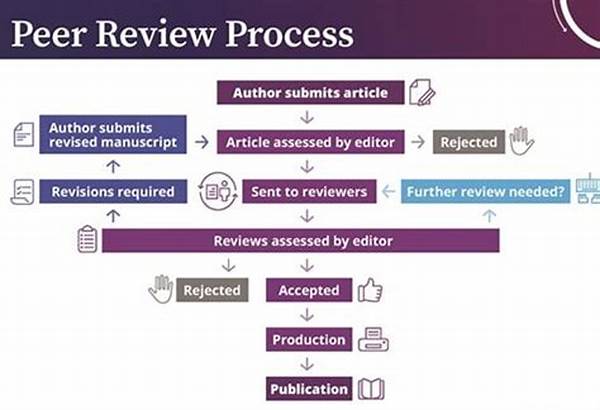Tambakbet Explores AI Peer Review Systems for Group Projects
In a world increasingly dominated by digital solutions, the realm of education and collaborative projects is no exception. Imagine a world where every individual contribution in a group project is meticulously analyzed and assessed using cutting-edge technology. This is not a far-fetched dream but a promising reality that Tambakbet, a renowned entity in the realm of educational technology, is exploring with its innovative AI peer review systems specifically designed for group projects. This initiative aims to redefine what it means to collaborate, ensuring that each individual’s efforts are recognized and properly evaluated.
Read More : Why Adaptive Learning Systems Outperform Traditional
The prospect of AI in the educational domain is not just about automating mundane tasks; it is about enhancing the learning experience. Picture this: You and your group mates are tackling a crucial project. You’re pulling all-nighters, researching, brainstorming, and putting in your best efforts. But how often is your personal contribution accurately acknowledged? With Tambakbet’s AI peer review systems, this guessing game becomes obsolete. This platform uses sophisticated algorithms to evaluate input from each member, ensuring fairness and transparency in assessments.
Unveiling the Future of Collaborative Learning
In recent studies, educators highlighted the challenges associated with evaluating group projects. Traditional review systems often fail to capture the nuances of individual contributions, leading to potential biases and unequal recognition of efforts. Herein lies the brilliance of Tambakbet’s solution. Their AI peer review system is crafted with the intention to mitigate these issues by providing a balanced and impartial evaluation process, allowing educators to better understand each student’s involvement and contribution.
By exploring Tambakbet’s AI peer review systems for group projects, educators and students alike are offered a unique opportunity: the chance to transform group projects from frustrating endeavors into enriching collaborative experiences. It’s not merely about fairness in grading; it’s about promoting a culture of accountability and shared responsibility among students. When students know their contributions are being fairly assessed by an unbiased system, they are naturally more motivated and engaged.
—
The Science Behind AI Peer Review Systems
Understanding AI’s Role
Tambakbet explores AI peer review systems for group projects not only to foster educational fairness but also to amplify the learning curve. By utilizing AI, the company taps into a reservoir of possibilities that are both innovative and intelligent. AI systems can analyze vast chunks of data at high speeds, offering insights that would otherwise remain hidden. Such technology adapts to understand the dynamics of human contribution in group settings, thereby redefining collaborative learning.
Facilitating Education Excellence
The implementation of AI in educational assessments signifies a monumental stride in pedagogy. Tambakbet acknowledges that group projects have always been a double-edged sword; they either serve as a means for collective learning or fall prey to individual dominance. By integrating AI, the system maintains a hierarchical balance, cutting down biases, and ensuring that efforts are quantifiable. Teachers can now identify laggards and prodigious contributors alike without the traditional guesswork, thanks to the analytical prowess of AI systems.
—
Enhancing Group Dynamics with AI
Building a Cooperative Learning Environment
Group dynamics can often be tricky, with some students potentially taking on more work than others. Tambakbet explores AI peer review systems for group projects to streamline these dynamics, ensuring each student is recognized for their input. This fosters a cooperative environment where each team member feels valued, leading to more effective learning and output.
The AI Advantage
What makes this AI system from Tambakbet so compelling is its intuitive design. The system can distinguish between qualitative and quantitative contributions, thus providing a comprehensive analysis of each participant’s role. Gone are the days of passive participation; with AI in the mix, every action counts.
—
Discussions on Tambakbet’s AI Initiative
By exploring the capabilities of AI in group peer reviews, Tambakbet is not just paving the way for technological integration in education but is also setting a precedent for how educational fairness can evolve. As we look towards the future, the potential for growth and development in this arena is vast, encouraging educators and students to embrace this innovative approach.
—
Moving Forward with AI in Education
Future Prospects
The journey of Tambakbet as it explores AI peer review systems for group projects is akin to embarking on an exciting odyssey—one filled with potential and promise. As educational institutions worldwide grapple with the challenges of fairly evaluating group endeavors, AI emerges as a beacon of hope. It promises not only efficiency but also a level of objectivity previously unattainable.
Consolidating Success
The successful integration of AI solutions in group projects requires careful consideration and adaptation. Institutions that adopt these systems must be willing to embrace change, collaborate with tech innovators like Tambakbet, and commit to ongoing refinement of their methods to maximize impact. This is not just about implementing technology; it’s about transforming the educational landscape to nurture future-ready learners.
In conclusion, as Tambakbet explores AI peer review systems for group projects, the educational sector stands on the brink of a renaissance. With AI as an ally, the future promises improved group dynamics, fairer assessment practices, and enriched learning experiences. The ultimate goal is to inspire a new generation of students who thrive in collaboration and innovation, equipped with the skills to navigate and flourish in a complex world.


